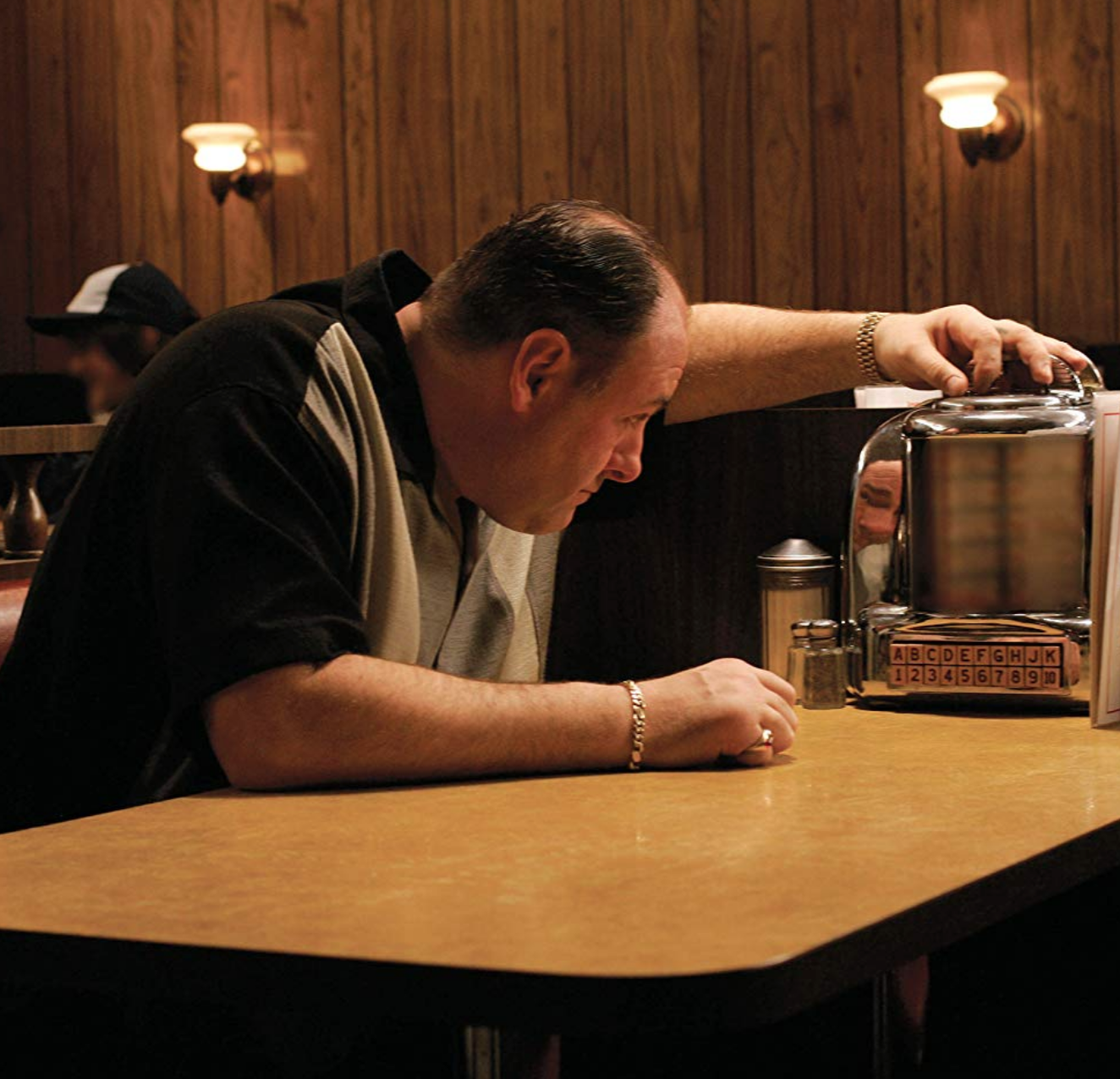
Warning: spoilers abound, and all victorious feelings of conclusion may be compromised.
Non-Exhaustive List of Television Shows Mentioned:
Melrose Place (1992-1997)
Seinfeld (1989-1998)
Six Feet Under (2001-2005)
The Sopranos (1999-2007)
Lamb Chop’s Sing-Along (1992-1995)
On May 24, 1998, in its thirty-five episode-long seventh season, Melrose Place ended with the series finale “Asses to Ashes.” It’s a doozy of an episode that encapsulates the mood of the entire show—slamming murder confessions, embezzlement investigations, cadavers, left-for-dead characters (two of them) in bathtubs, a pregnancy with surprise paternity results, arrests, an attempted murder, and a funeral into one hour with four commercial breaks. The show—which followed an evolving cast of (mostly white) beefcake basics with zero interpersonal skills or healthy boundaries—ends with Peter Burns (played by Jack Wagner)—who supposedly was dead but now isn’t, thanks to all of the above elaborate ruses—and Heather Locklear’s iconic Amanda Woodward tying the knot on some nondescript Southern Californian beach. The song playing as they walked off into the sunset for all eternity? Semisonic’s 1998 sleeper hit, “Closing Time”:
Closing time
Time for you to go back to the places you will be from.
Closing time
This room won’t be open ’til your brothers or you sisters come.
So gather up your jackets, and move it to the exits
I hope you have found a
Friend.
…
Closing time
Every new beginning comes from some other beginning’s end.
Of the song, Semisonic lead singer Dan Wilson says the lyrics both describe his baby’s birth and “being born” in genere. Appropriately, just as Melrose Place spun off from hunky carpenter Jake Hanson’s (played by Grant Show) appearance on the quintessential primetime teen soap 90210, it too beget Models, Inc.—the doomed program with a single-season run starring Locklear’s character’s mother. If, as “Closing Time” states, every beginning is, in actuality, an ending, were all seven seasons of Melrose Place a gestational period? It’s an on-the-nose choice in musical accompaniment, but then again, no one has ever accused Melrose Place of subtlety. The song is both comfort for those mourning the loss of these characters they’d followed for years, and a hint toward other replacement shows in the pipeline that they could swallow their grief, if they waited until sweep season.
The idiom, “swan song,” refers to an archaic belief that swans break their lifelong silences to intone a bittersweet yet poignant song at the moment of their deaths. The term’s source is disputed but written references date back to third century Greece, in texts by Aeschylus, Plato, and Socrates, among others. Swan song is, however, a misnomer, as the mute swan cries no dirge at its passing, but instead whimpers a series of grunts and hisses. Other species of swans, the trumpeter and tundra, are, however, rumored to go out with exquisite requiem.

Didactic swan songs have long clinched the ends of our entertainment—originating with the Greek chorus, who were both character and outside observer, and who provide meta-commentary like the Muppets’ Statler and Waldorf, but with a little more gravitas. The chorus also delivered the final words of Attic theater. This group (most often all-male, sometimes all elders) settled the narrative in a rhymed one-note-per-syllable song-and-dance moralistic exposition. This left the audience with something to ruminate on—the fallout from not welcoming refugees and immigrants, or lessons on the importance of being a good host, or the causality of fucking and then murdering a close family member. They closed their chants with a theatrical version of a fade to black: “We shall rest,” or “Gained his final rest,” or “Want no more, let sorry rest / all is ordered for the best.”
A few more recent memorable swan songs include Seinfeld’s, “The Finale (Part I)” that signs off nine seasons with “Good Riddance” by Green Day, the lyrics of which describe a show whose format was wholly predicated on absurdist unpredictability with all loose ends tied up by the end of a half hour:
“It‘s something unpredictable, but in the end it’s right
I hope you had the time of your life.”
Or, Six Feet Under’s finale “Everyone’s Waiting,” where Sia’s “Breathe Me” accompanies a montage of main cast’s deaths.
Sia’s words, “I have been here many times before,” describes the show’s format of opening each episode of all five seasons with brief narratives of a person’s demise, which would then transition into the main storyline of the Fisher family’s funereal business, as well as the show’s, sometimes bromide, espousal of the inextricable bond of life and death.
Mad Men’s series finale “Person to Person,” aptly meditates into the ether with “I’d Like to Teach the World to Sing” from the famous Coke commercial, which speaks to the show’s main plot of advertising:
I’d like to teach the world to sing
In perfect harmony
I’d like to hold it in my arms
And keep it company
And finally, the most infamous: the final episode of The Sopranos, a show credited with changing the landscape of television forever and granting critics everywhere the term “prestige TV.” “Made in America,” is a controversial episode, in which Tony Soprano—the irresistible sociopath with a heart of salami—waits for his family to join him, one-by-one, one last time, for their final supper at Holsten’s restaurant in northeast New Jersey. Director David Chase builds tension in the sequence through the pacing, banal conversation, and Tony’s choice in jukebox music: “Don’t Stop Believin’” by Journey—a song also beloved by fraternities everywhere as their own closing music to keg parties. First comes Carmela, Tony’s wife (played indelibly by Edie Falco), welcomed by the funereal ding of the restaurant door.
Next comes Tony’s prodigal son, AJ, hidden at first behind a stranger in a Members Only jacket. The stranger enters the diner and sits at the counter, orders coffee, stirs in sugar, and watches the family as they eat onion rings. In a direct nod to The Godfather, he gets up to use the bathroom straight behind Tony’s head. Cut to daughter Meadow outside the restaurant having difficulty parallel parking (is this purgatory?). Tony smiles slightly at his family as his eyes survey the room. The music swells. Meadow finally manages to park her car correctly and runs across the street. The bell of the diner door dings one last time. Tony looks up. The screen goes black and the song stops. Viewers everywhere check their cable signals.
Some will win, some will lose
Some were born to sing the blues
Oh, the movie never ends
It goes on and on, and on, and on
Interminable debates ensued over whether or not Tony was alive or dead, if the worse death was instead a life reconciled to paranoid watching behind his back (or behind his son), what all the deliberate directorial choices could possibly mean (was there symbolism in an onion ring? Meaning in Meadow’s car’s wheel hitting the curb?), not to mention outrage after such a blunt end to seven seasons of committed watching. But I think the answer lies within the lyrics of the concluding song to “Made in America”: the action goes on and on, and on, and on. Thus, Tony lives! If nothing else, through syndication.
Unlike film and television, which both enjoy resolution instead of concluding in the unknown—the uncertainty of negative capability ill-suited for primetime—it’s common among plays to end their plots literally with a bang, just as The Soprano’s expiry. Many plays end at an exacting climax to avoid the dreaded “audience drizzle” (a playwright anticipates that the audience will miss crucial plot moments to get to their dinner reservations on time, and so avoids a slow denouement). Therefore, the last lines of modern to contemporary theater is often delivered like a gunshot. Just read Chekhov: “What I wanted to say was Constantine shot himself.” Such a devastating message told with cool, ordinary delivery that denies us the liberation of explanation. Chekov’s gun has become a cliche theatrical device, a propositional foreshadowing—something that viewers see or hear, but may not pay mind to, at the beginning, that loops around to enact an important plot point at the end. Oh, by the way, this line says, what I wanted to say was: remember we set you up for this earlier with the gun? Do you recall the gun? The gun should have been a big hint to you. But all I’m going to say is what I’ve been wanting to say this entire time and that is that your son is dead and possibly has been dead from the very beginning and I won’t be bothered to stick around for the consequences.
Like these percussive finishes of theater, The Sopranos abrupt denial of a purgative series close also brings to mind another song, the peak antithetical swan song: the “Song that Never Ends” from Shari Lewis’ Lamb Chop Play Along. This song, in somber contrast to the resolution that swan songs strive toward, so dutifully captures our existential timeline: that ours goes on and on, and on, my friend.




